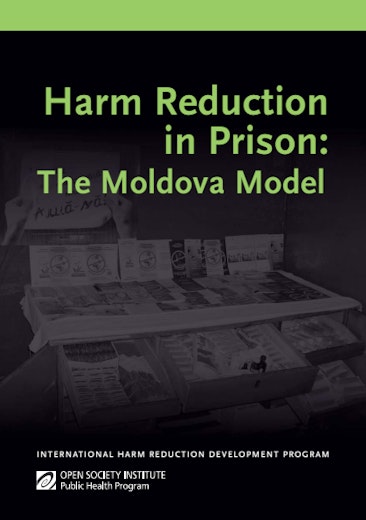Prevalence of HIV infection among prisoners in many countries is significantly higher than in the general population. Hepatitis C virus prevalence is even higher. Though most prisoners living with HIV contract their infection prior to imprisonment, the risk of being infected in prison, specifically through the sharing of contaminated injecting equipment, is high.
Even countries that have invested heavily in drug demand and drug supply reduction efforts in prisons have not been able to stop injecting drug use. Outbreaks of HIV infection caused by sharing injection equipment in prisons demonstrate how rapidly HIV can spread in detention settings unless effective action is taken to prevent transmission.
An increasing number of countries have introduced HIV programs in prisons since the early 1990s. However, many of these programs exclude necessary interventions such as needle exchange and methadone treatment. Not so in Moldova, whose experience with introducing and expanding a comprehensive HIV program, including such interventions, is described in this report.
Produced by the Open Society Institute International Harm Reduction Development Program, Harm Reduction in Prison is available for download in English and Russian.
Download
-
Harm Reduction in Prison: The Moldova Model (English) (364.2 Kb pdf file)
Download the report in English.
-
Harm Reduction in Prison: The Moldova Model (Russian) (472.42 Kb pdf file)
Download the report in Russian.
Read more
Homicide Reduction
Q&A: How One Colombian City Is Tackling Violent Crime

Palmira, Colombia, is one of the most violent cities in the world. But a prevention program focusing on youth has reduced crime significantly—and earned it an international peace prize. The city’s mayor on what’s working.
In Remembrance
Lani Guinier’s Overlooked Education Legacy

The late Lani Guinier thought deeply about the intersection between education and criminal justice. Her leadership at Open Society helped pave the way to colleges across the country offering higher education to the incarcerated.
WOMEN'S RIGHTS
Challenging Mexico’s Abusive Preventative Detention System

Mónica Esparza’s case is one of the most notorious cases of extreme gender violence carried out by Mexican authorities. What her story teaches about how to combat the country’s scourge of gender-based violence.
